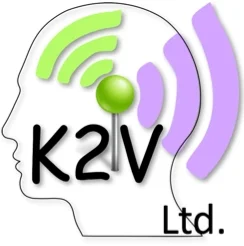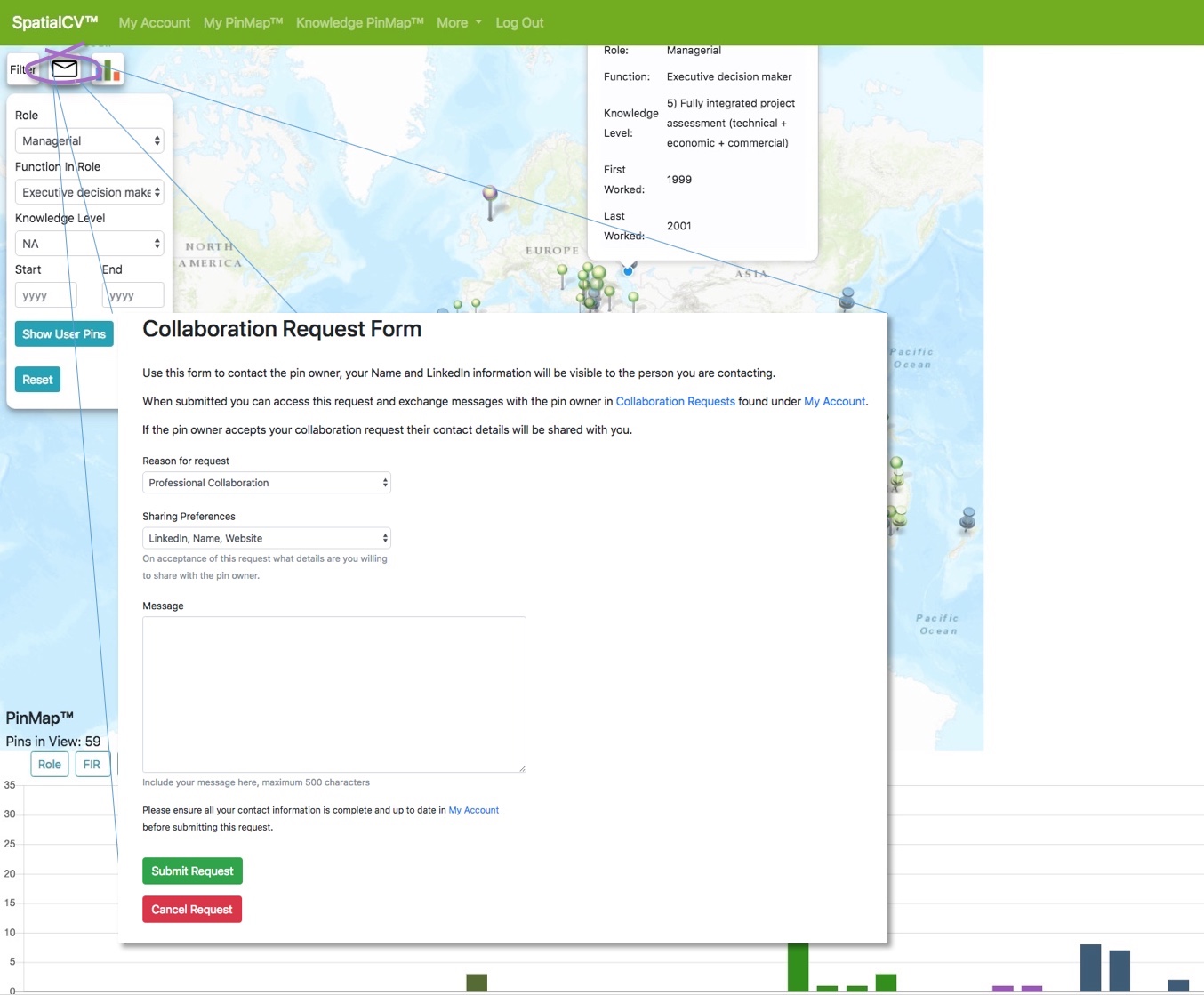New Enhancements to SpatialCV™ (February 2019)
Using SpatialCV™ to increase our visibility is more than just career planning or an opportunity to find, or to be found. It is about having conversations with people who are genuinely interested in what we know. It doesn't matter whether we are already fully employed or whether we are looking for more from our working life: we have accumulated years of experience which makes us equally unique, unprecedented, and interesting. New enhancements have been released, which include:
Enhanced visibility
Knowledge PinMap™ provides all the visibility of combined and individual knowledge by making all pins anonymously public as symbols with queriable attributes or as a heat map. Two new features have been added:
· A bar chart option can now be toggled to compare the spread of roles, functions in role and levels of knowledge, which has been introduced to facilitate profiling.
· Zooming in displays a reduced number of pins, which shows up in the pin count and resets relative heatmap for the display area only. Pull back the zoom or pan the display and both pin counts and heat rendering will adjust accordingly on the fly.
Channeled Networking
Having identified a knowledge holder of interest through profiling, we have anecdotal evidence that the career path that interests us is achievable. To find out how a knowledge holder achieved their career requires a dialogue in confidence. Click on a pin belonging to our chosen knowledge holder, click the envelope icon (below) and SpatialCV™ will create a collaboration request form which, when submitted, sends an invitation to the knowledge holder along with our identity as the enquirer. The request initialises an asymmetric dialogue where the knowledge holder attempts to establish what it is that we as the requester want to know without revealing their identity to us. If this were an exchange using social media, hiding our identity may have encouraged trolling but with channeled networking, if the identity of the requester is known, knowledge holders can withhold their identity until they are satisfied that the request is genuine or that communicating with the requester presents no conflict of interest. Channeled networking renders dialogue with an unknown party “safe”; withholding your identity as a knowledge holder protects you and your content knowledge until or if you choose to share it. Satisfied, the knowledge holder can “accept” and in so doing, reveal their identity. If the knowledge holder detects insincerity in the request or the potential for a conflict of interest, the option to decline closes that network channel.
Autonomous Career Management.
SpatialCV™ was originally designed to capture changing roles through time, mapping the breadth of our experience and recording the acquisition of different levels of expertise in a variety of professional domains. The premise is that careers are essentially modular and now that there is sufficient spread of knowledge holders registered on SpatialCV™ to build realistic peer comparisons, we can see how our modular careers match up within our demographic peer group, and what that might mean for our future aspirations and development (click HERE for the article). Two new features have been added:
· A one-page summary sheet can be requested as a standard output featuring individual and peer statistics. The summary sheet is intended for personal use only but as recruiters start to use the same metrics as standard, exports will be available for knowledge holders to present to potential employers as well.
· The career health checker is a new option, which provides three standard plots of your demographic peer group that includes “Ambition”, “Incentive” and a peer summary page [click HERE to read the article]. Your perspective is missing from these plots but they can be added and emailed to you by filling in a questionnaire.




